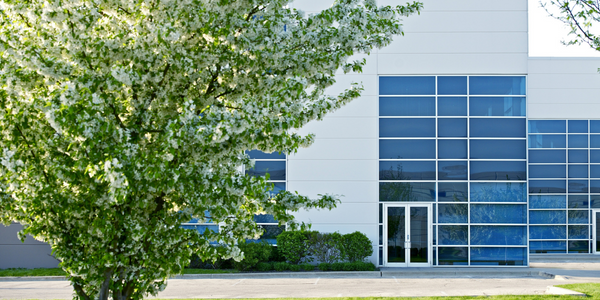Technology Category
- Infrastructure as a Service (IaaS) - Virtual Private Cloud
- Wearables - Virtual Reality Glasses, Headsets & Controllers
Applicable Industries
- Cement
Applicable Functions
- Product Research & Development
- Sales & Marketing
Use Cases
- Virtual Reality
Services
- System Integration
About The Customer
Freeman is a global leader in the events industry, specializing in creating memorable moments that inspire and connect audiences, such as conferences, trade shows, and corporate meetings. The company offers a range of products that enhance experiences before, during, and after events, from beautiful in-booth LED light installations and spatial virtual reality to attract buyers, to real-time analytics dashboards to optimize event ROI. When the global pandemic forced most in-person events to transition to an online medium, Freeman quickly adapted and created a virtual event platform, OnlineEvent®, to serve their new user requirements.
The Challenge
Freeman, a global leader in the events industry, faced a significant challenge when the global pandemic forced most in-person events to transition to an online medium. The company had to quickly adapt and create a virtual event platform to serve their new user requirements. The new platform, OnlineEvent®, required a chat feature that enabled attendees to communicate with each other in specific channels during live stream presentations. The challenge was to integrate live stream chat functionality into its new virtual event platform to support thousands of concurrent users — and fast. Freeman's director of digital product management, Elissa Ewers, had to evaluate chat vendors in a short time frame, focusing on chat solutions containing must-have attributes such as rapid integration, scale to support tens of thousands of concurrent users, security, and single sign-on functionality.
The Solution
After evaluating several third-party chat API solutions, including a custom javascript build, and the third-party providers Chatroll and Pusher, Freeman integrated Stream Chat using the React SDK in just three weeks. Stream Chat was chosen for its flexibility, functionality, and ability to support Freeman's unique needs. The solution offered the ability to make channels, customize UI, and provided interactions like sharing files, emojis, link parsing, add mentions, and threads. During the integration process, Freeman's development team received guidance from Stream’s Director of Customer Success, Stephen Hodgetts, to deploy the chat SDK in a multi-tenant way. Nearly a year later, Freeman is enabling more of Stream Chat’s features such as direct 1:1 chat and moderating block lists and is customizing the UI to harmonize chat design with its brand identity.
Operational Impact
Quantitative Benefit

Case Study missing?
Start adding your own!
Register with your work email and create a new case study profile for your business.
Related Case Studies.

Case Study
System 800xA at Indian Cement Plants
Chettinad Cement recognized that further efficiencies could be achieved in its cement manufacturing process. It looked to investing in comprehensive operational and control technologies to manage and derive productivity and energy efficiency gains from the assets on Line 2, their second plant in India.

Case Study
Digital Transformation of Atlanta Grout & Tile: An IoT Case Study
Atlanta Grout & Tile, a Tile, Stone & Grout restoration company based in Woodstock, Georgia, was facing challenges with its traditional business model. Despite steady growth over the years, the company was falling behind the web revolution and missing out on the opportunity to tap into a new consumer base. They were using independent software from different vendors for each of their department information and workforce management. This resulted in a lot of manual work on excel and the need to export/import data between different systems. This not only increased overhead costs but also slowed down their response to clients. The company also had to prepare numerous reports manually and lacked access to customer trends for effective business decision-making.

Case Study
Revolutionizing Construction Equipment Rental: A Case Study on ProsRent and ENO8
ProsRent, a startup that won the 'Best Financial Opportunity' and 'Best Pitch' at CodeLaunch 2016, aimed to revolutionize the way construction professionals source and rent heavy equipment. In the construction industry, project managers and contractors typically rent heavy equipment from supply companies. However, predicting inventory can be challenging, and finding the required equipment at the right time and place can be a hassle. If the preferred vendor doesn't have the required equipment, it results in wasted time and money in searching for it, often leading to higher costs due to non-preferred rates and increased delivery costs if the vendor is located far from the job site. Suppliers, on the other hand, desired access to a wider base of trusted renters that they didn't have to vet themselves and wanted to offer dynamic rental pricing based on demand and availability in their market. ProsRent's challenge was to produce a minimum viable product that was fast and first to market but also strong enough to engender loyalty and repeat business from the target market.

Case Study
AI-based Automation for Commercial Office HVAC: A Verdigris Case Study
Modern buildings are required to run longer hours, support a variety of end uses, and contribute to higher levels of economic productivity, leaving a thin margin for error. However, even the most advanced building and environmental control systems have failed to adequately support facilities and operations management. Buildings are often inefficient and the people using them are underserved. To meet occupant comfort and maintain cost and energy efficiency, a dynamic, AI-assisted approach is needed.

Case Study
Revamping EE's Legacy ERP: A Case Study on BT's Strategic Transformation
EE, even after its merger with BT, was operating its ERP estate on legacy infrastructure, hosted on the premises of a third-party supplier. This outdated system resulted in a volume-based operational model, higher time to market, longer delivery cycles, and unsatisfactory customer experience. BT recognized the need for a strategic transformation of these aging ERP systems and sought a partner who could proactively manage application services. The partner was also expected to handle development requirements associated with application management services, drive accountability, and ownership with a time and target-driven transformation of these services. BT's primary goals were to improve customer experience, reduce cycle time, and measure these improvements with precision.








